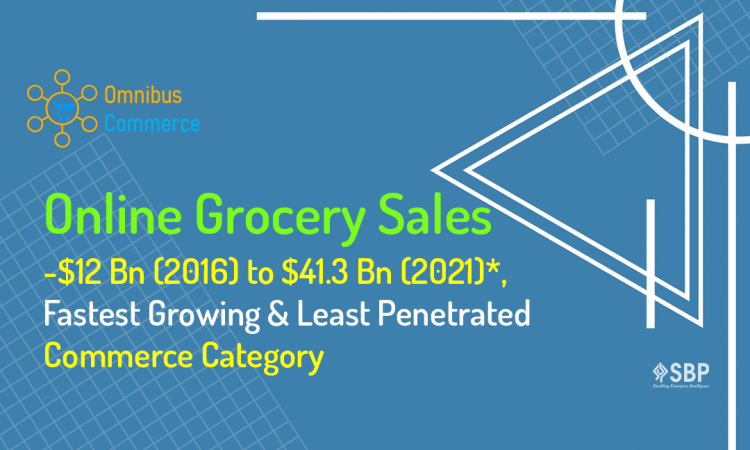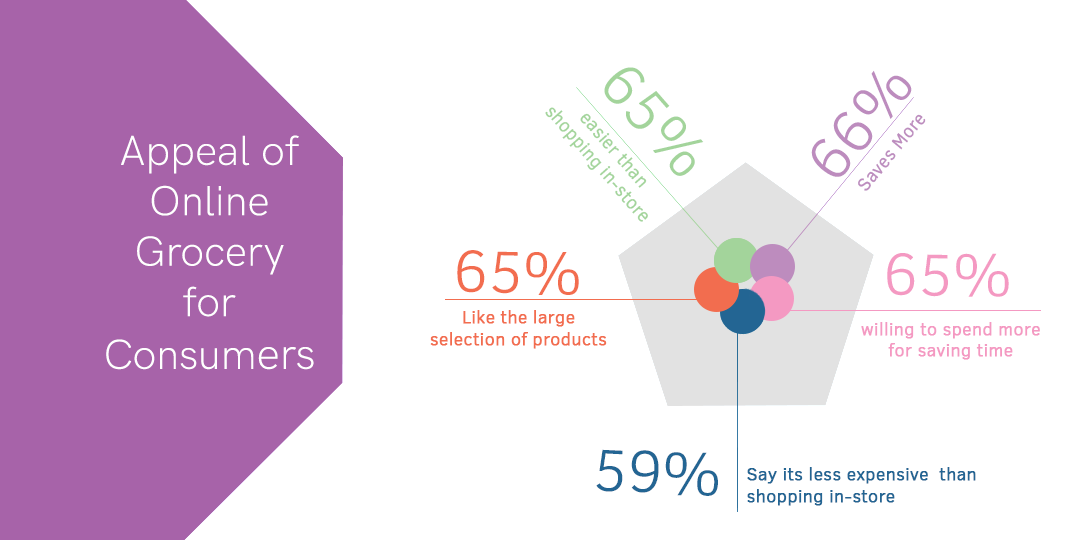
Online Groceries, Already Fastest Growing eCommerce Category, Now At Inflection Point
Online grocery is growing rapidly from its small base of 2016. Its market value has doubled by 2018. Even before the current COVID-19 crisis, U.S. food and beverage eCommerce sales were projected to grow 23.4% to more than $32 billion this year, making it both the fastest-growing and least penetrated eCommerce category (Now of course, all bets are off). This suggests that the consumers have crossed a major barrier to adoption – ordering essentials and certain foods online. Grocers are rushing to take advantage of this potential, resulting in a highly competitive market. Both established grocery players and newcomers to the space are expanding their curbside pickup and delivery offerings – the two basic components of online grocery, to grab market share.
In 2019, Walmart which already sells more groceries in U.S. stores than any other retailer worked hard to pass Amazon (No. 1 in the 2019 Digital Commerce 360 Top 1000) as nation’s leading online grocery seller. According to the 2K19 Coupon Intelligence Report, overall, 63% of consumers make all or most of their food purchases in-store. But online shopping has increased year over year by 44% for food; 40% for HBC products; and 38% for household items. Meanwhile, traditional grocery store chains invested in new capabilities and services aimed at keeping existing customers and attracting new, digitally inclined shoppers.

While companies like Instacart exist that offer online grocery services for other grocers, the focus here is specifically on companies that sell their own products. The desire for convenience, shifting consumer tastes and preferences and price/quality considerations have all bolstered demand for online grocery. Meanwhile, rapid improvements in speed and availability of same-day delivery have improved the customer experience. Here are some of the key takeaways from several reports on grocery shopping:
-
Online grocery currently comprises a small portion of grocery overall but is on a rapid rise. Adoption is still low, with about 10% of US consumers saying that they regularly shop online for groceries, according to NPD in 2018.
-
However, the value of the US online grocery market has grown from $12 billion in 2016 to $29 billion in 2019 and it has plenty of room to grow, given that the size of the overall grocery market was $632 billion in 2018 according to IBISWorld.
-
Both established grocers, like Walmart and Kroger, and players new to the space like Amazon are rushing to improve their curbside pickup and delivery options, and all of them are employing differing strategies suited to their size and strengths.
-
Regardless of grocers’ individual strategies, they will all need to find a way to run their online grocery offerings in a profitable way and to address consumers’ barriers to adoption.
Online grocery sales now account for just 6.3% of total grocery-related spending by households in the United States, according to Brick Meets Click, a strategic advisory firm focused on digital transformation in the food business. But eCommerce is a fast-growing sales channel, while stores are not. At a time when overall grocery sales are virtually stagnant, online sales grew 15% on a year-over-year basis, Brick Meets Click says. In 2020, the firm expects online sales to represent 7.0% of the U.S. grocery market.
To meet that demand, retailers are making eCommerce more widely available. As of September, Brick Meets Click found home delivery and pickup services were available to 90% of all the households in the U.S., up from 81% in 2018. SBP Commerce (Hybris) is an omnichannel platform that enables brands to cash in on the opportunity growing your customer base.
SBP offers SAP Commerce (Hybris) services to help you make the best of online retailing.
Reach out to us on “getHybris@sbpcorp.com” for a demo on our portfolio of products “Omnibus Commerce for SAP Commerce”.



